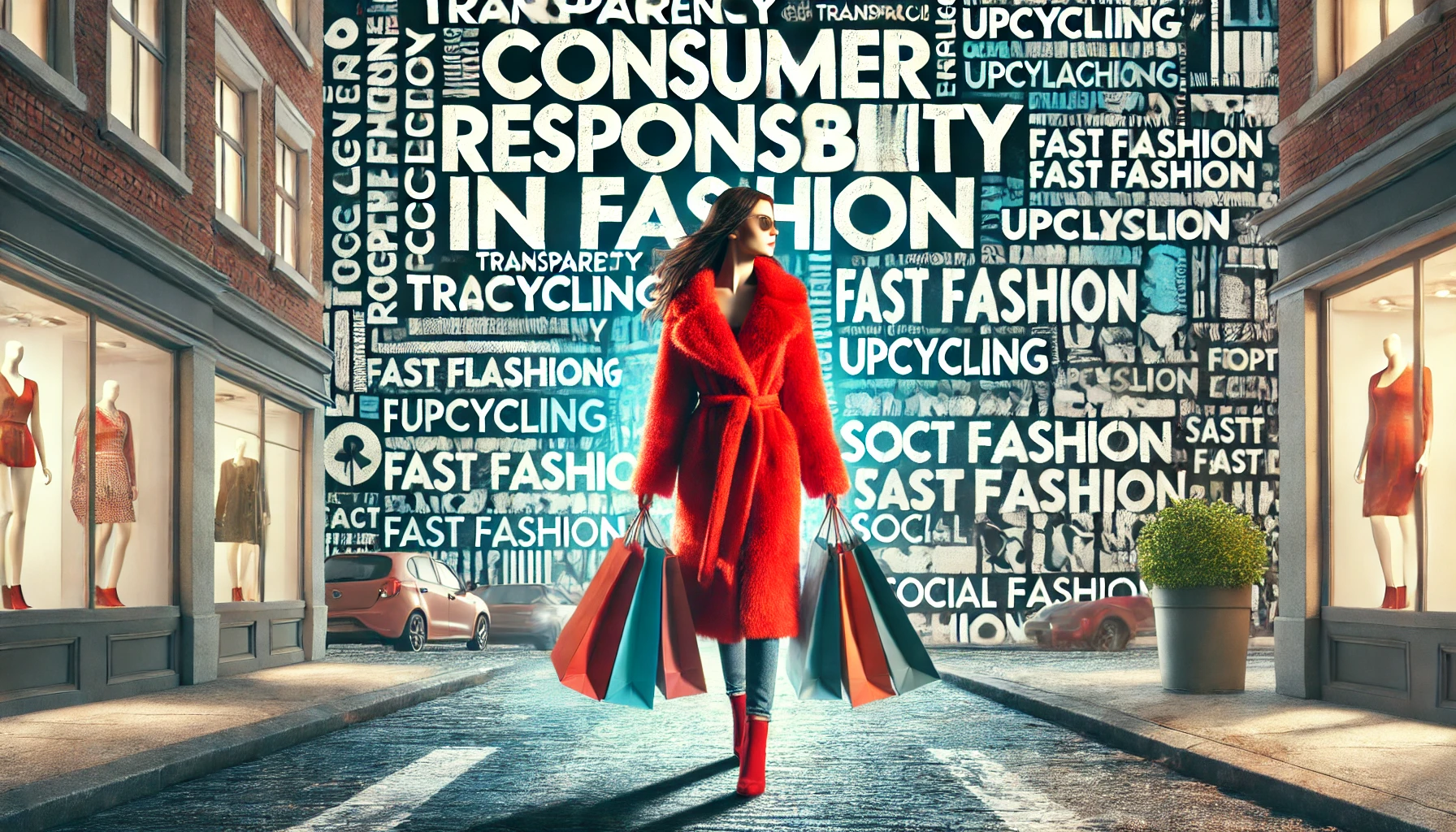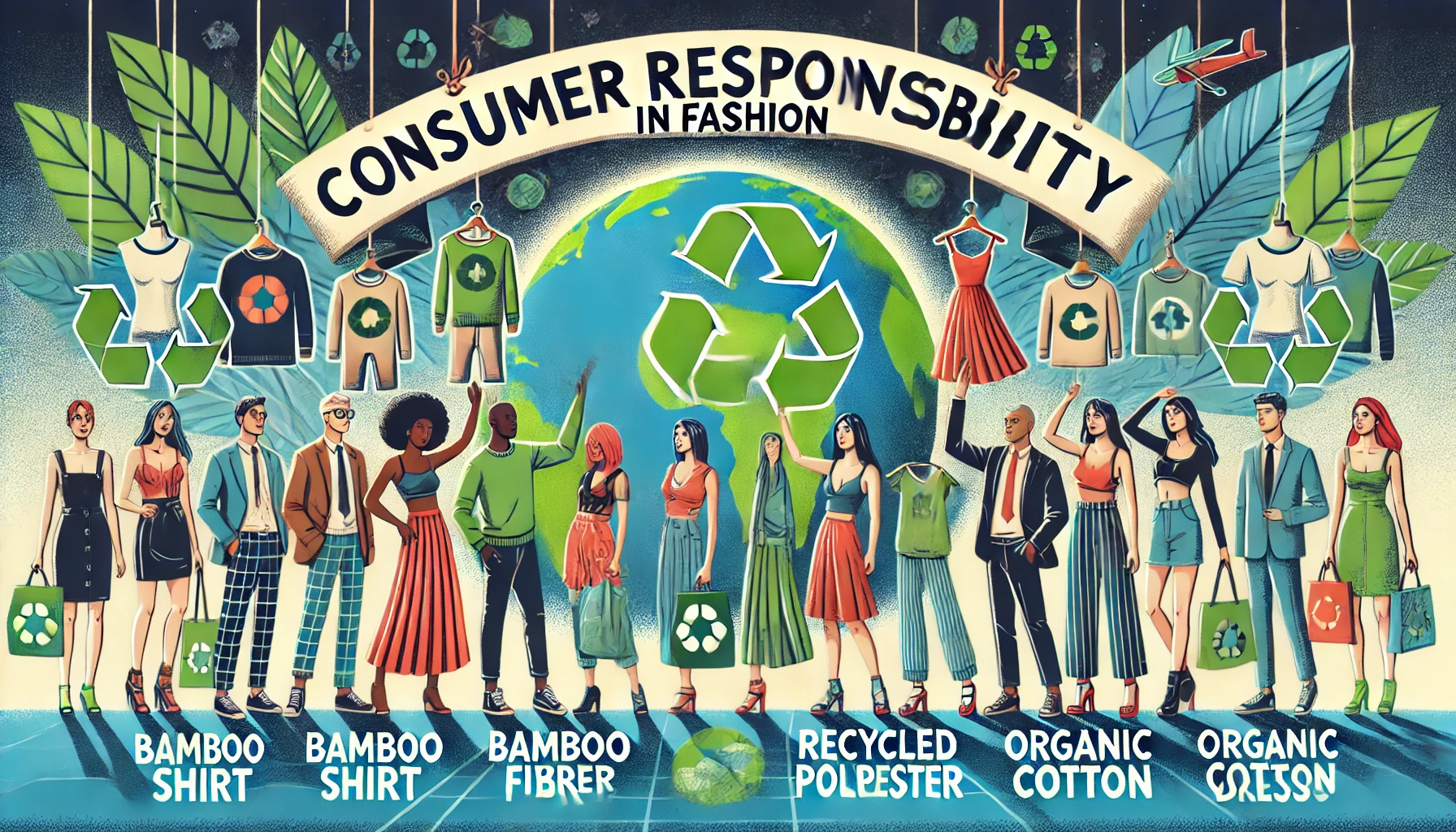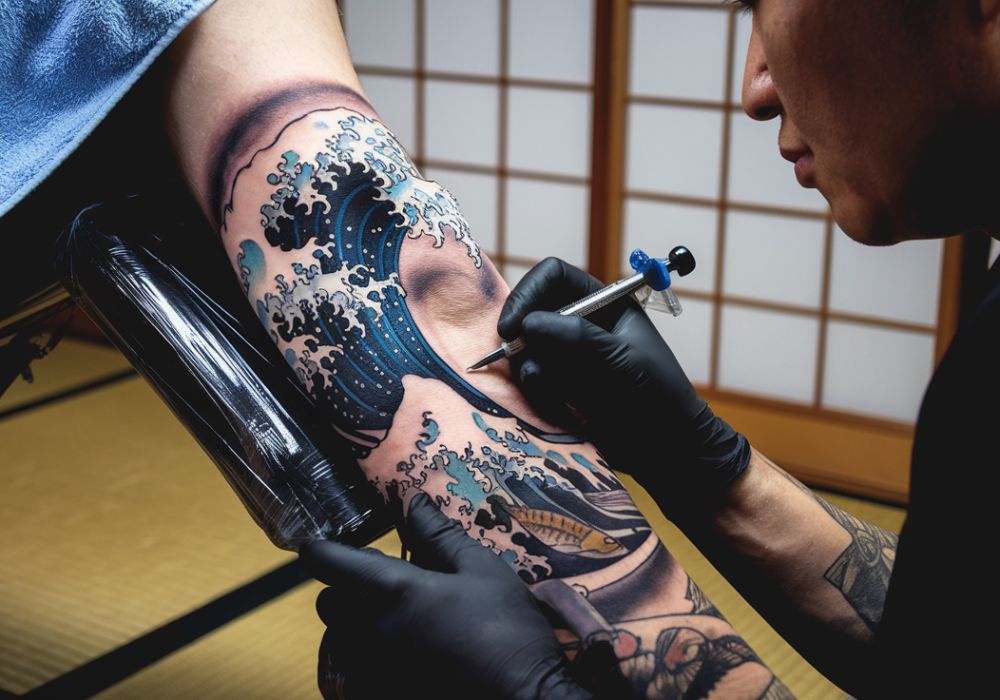Introduction
What is Consumer Responsibility in Fashion?
Consumer responsibility in fashion means understanding how our choices impact the environment and society. It’s about knowing that when we buy clothes, we can affect the world. When people choose what to buy, they are not just selecting a piece of clothing but also supporting the practices behind its production. This includes how it was made, who made it, and what materials were used.
Fashion’s Impact on Our World
The fashion industry significantly affects our planet and its people. The fashion industry uses a lot of water and energy. It also pollutes the environment because of the chemicals used to color and treat clothes. Also, making clothes can involve many steps. Sometimes, these steps can lead to poor working conditions and low pay for workers. As consumers, understanding these impacts helps us make better choices that can lead to positive changes.
Understanding Consumer Responsibility
Exploring the Concept
Consumer responsibility means knowing where our clothes come from and how they are made. It is important to think about more than just how clothes look or how much they cost. We should also think about how making these clothes affects people and the planet. This responsibility includes understanding that our choices when we buy things can influence the companies that make them. We have the power to make a difference with what we choose to buy.
Consumers as Purchasers and Influencers
As purchasers, consumers directly affect demand for different types of fashion. Choosing clothes made the right way sends a clear message to companies. It tells them we care about how our clothes are made. People also influence others when they talk about their choices on social media or with friends. This can start a chain reaction. More people might start to think about where their clothes come from and choose better options. This can really help change the fashion world.
In our talk, we use words like “sustainable practices,” “ethical production,” and “environmental impact.” These words help explain the kind of responsibility shoppers have. We also talk about “supply chain transparency” and “fair trade.” These are big ideas that show how complex the fashion world is. Understanding these ideas helps people see how their shopping choices matter. We try to make these topics clear and easy to understand. This helps everyone see how important they are in making fashion better for the world.
The Environmental Impact of Fashion
The fashion industry greatly affects our planet. It uses a lot of water, releases carbon into the air, and produces waste. For example, making one cotton shirt needs about 2,700 liters of water, which is as much as one person drinks in 2.5 years. Making and sending clothes adds carbon dioxide to the air. This makes climate change worse.
Fast Fashion vs. Sustainable Fashion
Fast fashion involves making clothes quickly and cheaply to meet new trends. These clothes are often worn only a few times before being thrown away, which leads to a lot of waste. On the other hand, sustainable fashion focuses on making clothes that are better for the environment. This means using materials that are good for the Earth, like organic cotton or recycled fabrics. Clothes made this way last longer and can be recycled.
Ethical Considerations in Fashion
Labor Rights and Fair Trade
It’s not just the environment that the fashion industry impacts; it’s people too. Many workers in the fashion industry do not have safe working conditions or fair pay. Fair trade practices are important because they ensure that workers are treated well and paid fairly. Supporting brands that use fair trade practices can help improve the lives of workers around the world.
Case Studies of Ethical Brands
Some brands are working hard to be more ethical. For example, Patagonia and People Tree use organic materials and ensure their workers are treated fairly. Patagonia also repairs clothes to extend their life, and People Tree partners with fair trade producers. Supporting these brands helps promote better practices in the fashion industry.
This section of the article explains how the fashion industry affects the planet and people. This part talks about two types of fashion. Fast fashion makes clothes quickly and cheaply. These clothes are often thrown away soon. Sustainable fashion is better for the Earth. It uses materials that are good for the planet and makes clothes that last longer. This part also shows why it is important to treat people who make our clothes fairly. By choosing sustainable and ethical fashion, people can help make a positive change in the world.
Consumer Behavior and Sustainable Practices
When people shop, their choices can really make a big difference. When you buy clothes that last longer or are good for the Earth, companies notice. They start to make better clothes because of your choices. People are thinking more about how their shopping affects the planet. They choose to buy clothes that are kind to the Earth. This way of thinking and buying is called conscious consumerism. It means being careful and thinking about what you buy. It’s all about being aware and making choices that are good for the environment.
The Role of Education in Consumer Responsibility
Knowing about sustainable fashion is super important. When people know where their clothes come from and how they are made, they can choose better. Many groups and projects teach people about fashion that is good for the planet. They help everyone learn how to make smart choices when they shop. For example, some organizations run ads, set up websites, and hold events to spread the word. Schools might have special programs to teach students about smart fashion choices.
When we learn and teach others, we help everyone shop better for our planet. Learning about sustainable fashion can really help. It can make the fashion industry better. They can make clothes that are good for people and the Earth.

Strategies for Responsible Consumption
Making thoughtful fashion choices isn’t just about style—it’s about caring for our planet and the people on it. Here are some easy ways you can shop smarter and kinder:
Choose Second-Hand and Vintage
Buying second-hand clothes is a great way to reduce waste. Clothes that are pre-loved are not only unique but also much cheaper. Thrift stores, online shops, and vintage stores are great places to find special clothes.
Opt for Quality Over Quantity
Instead of buying lots of cheap clothes, choose a few high-quality items. Good quality clothes last longer, so you won’t have to shop as often. Look for strong fabrics and well-made clothes that you can wear many times.
Know Where and How Your Clothes are Made
Check the labels on clothes before you buy them. Look for brands that tell you where their clothes come from and how they are made. Brands that are proud of their ethical practices will share this information openly.
Care for Your Clothes
Taking good care of your clothes makes them last longer. Simple steps like washing in cold water, drying on a line, and following the care labels can keep your clothes in great shape for years. This means you buy less often, which is better for the planet.
Challenges to Achieving Consumer Responsibility
Being a responsible consumer sounds great, but sometimes it can be tough. Here are some things that can make it hard:
Cost
Sometimes, clothes made responsibly are more expensive. This is because fair wages and quality materials cost more. However, buying less and choosing well can balance out these costs over time.
Accessibility
Not everyone has easy access to sustainable fashion. Some areas might not have thrift stores or brands that offer ethical options. However, online shopping can help bridge this gap, allowing more people to make responsible choices.
Lack of Awareness
Many people don’t know about the problems in the fashion industry or how their choices can make a difference. Education is key here. The more we share and learn about sustainable practices, the more people can join in making better choices.
Planned Obsolescence
Sometimes, clothes are made to wear out fast so you’ll buy more. This practice is called planned obsolescence. Choosing quality garments and taking good care of them can help fight against this practice. Knowing these tips and problems can help you make better choices. This will lead to a kinder and cleaner fashion world. Remember, every little bit helps, and your choices do make a difference!
Case Studies of Responsible Consumer Behavior
How Individual Choices Lead to Big Changes
Many people think that one person can’t make a big difference in the fashion world, but some stories show this isn’t true. For example, a group of high school students in the U.S. campaigned for their school uniforms to be made from recycled materials. After their campaign, the school chose a new uniform supplier that cares about the environment. This helped other schools in their area think about doing the same.
Consumers Pushing for Change
In another case, a community in Sweden started a “swap shop,” where people can trade clothes they no longer wear instead of buying new ones. This idea became very popular. Local shops started giving their unsold clothes to the swap shop. This helped reduce waste. It also made more people in the community think about sustainable fashion. The Future of Consumer Responsibility in Fashion
Emerging Trends and Innovations
The fashion industry is seeing exciting innovations that could change how we think about clothes. New technologies help us recycle clothes better. Now, we can make old clothes into new ones without losing how good they are. Also, more brands are using sustainable materials like organic cotton or bamboo, which are better for the environment.
Predictions for the Next Decade
Experts believe that in the next ten years, consumers will have even more power to influence the fashion industry. There are apps that show how green a brand is. This helps people make good choices when they shop. More information is also online. We might also see more laws that require fashion brands to tell customers how and where their clothes are made. When we learn about these changes and choose to support good practices, we all help make fashion better for our planet. This is how we all have a part in shaping a better future for our planet.

Conclusion
When writing about how people can shop more responsibly for clothes, it’s important to use trusted sources. Link to well-known groups that study fashion and the environment. For example, you can share links to the Fashion Revolution or the Sustainable Apparel Coalition. These links give readers more information and help them learn more about the topic.
Providing Useful Information Without Keyword Stuffing
To keep readers interested, share helpful information about caring for the planet through fashion. Use different words like “ethical fashion,” “green clothes,” and “sustainable fashion habits” instead of saying the same thing over and over. This makes your writing better and more fun to read.” This approach helps improve readability and SEO without compromising the article’s quality.
Cultivating Trust with Secure and Accurate Content
Make sure all the information is correct and updated. This includes new trends and studies in sustainable fashion. Keep it simple for everyone to understand. Use secure links (HTTPS) for all external sites to protect your readers and enhance the trustworthiness of your content. Check all facts against multiple sources and correct any discrepancies before publication.
Writing Clearly and Organizing Content Logically
Present information in a straightforward, organized manner, using short sentences and paragraphs. Break down complex ideas into digestible pieces, and use subheadings to guide readers through the article. This setup helps everyone, even young readers, easily understand and remember the information.
Incorporating NLP Guidelines and Semantic Richness
Use simple words and short sentences about recycling, carbon footprint, fair trade, and helping consumers. These ideas help us understand more about being responsible in fashion and make it easier for more people to find the article online. Use contextually related words to enhance the article’s relevance and comprehensiveness.
Leveraging Entities and Contextual Relationships
When we talk about making fashion better for our planet, some groups and people are very important. These include groups that help protect the environment and brands that make clothes in a way that is good for Earth. Some famous people also help by telling others how important it is to take care of our planet.
In the world of fashion, everyone has a part to play. People who make clothes, people who buy them, and even the government need to work together. This helps make sure that clothes are made in a way that is safe for the planet. It’s like a team where everyone has a job to do. This way of writing helps everyone understand easily. It also makes it easy for computers to find and share the information with more people. This helps more people learn about how to buy clothes that are good for the Earth.
FAQS
1. What is consumer responsibility in fashion?
Consumer responsibility in fashion means making choices that are better for the environment and for the people who make our clothes. It involves thinking about how clothes are made and choosing to buy items that last longer and are made in fair ways.
2. Why is sustainable fashion important?
Sustainable fashion is important because it helps reduce the negative impact on our planet from making and throwing away clothes. It uses less water, less energy, and creates less waste, which helps keep our environment healthier.
3. How can I tell if a brand is truly sustainable?
Look for brands that share details about how and where their clothes are made. Check if they use materials that are good for the environment and if they pay fair wages to their workers. Certifications like Fair Trade or Organic can also be good signs.
4. What are some simple steps I can take to be more responsible with fashion?
You can start by buying less and choosing better quality items that last longer. Also, consider buying second-hand clothes, recycling old ones, and fixing clothes instead of throwing them away.
5. What does ‘fast fashion’ mean, and why should I avoid it?
Fast fashion is about making and selling lots of clothes very quickly and cheaply. It often leads to waste and poor working conditions for workers. Avoiding fast fashion means you help reduce waste and demand better standards for workers.
6. Can washing my clothes less often really help the environment?
Yes, washing clothes less often can save water and energy, and it also makes your clothes last longer. Try airing out clothes instead of washing them after every wear.
For More More Visit: Creative Blogs

